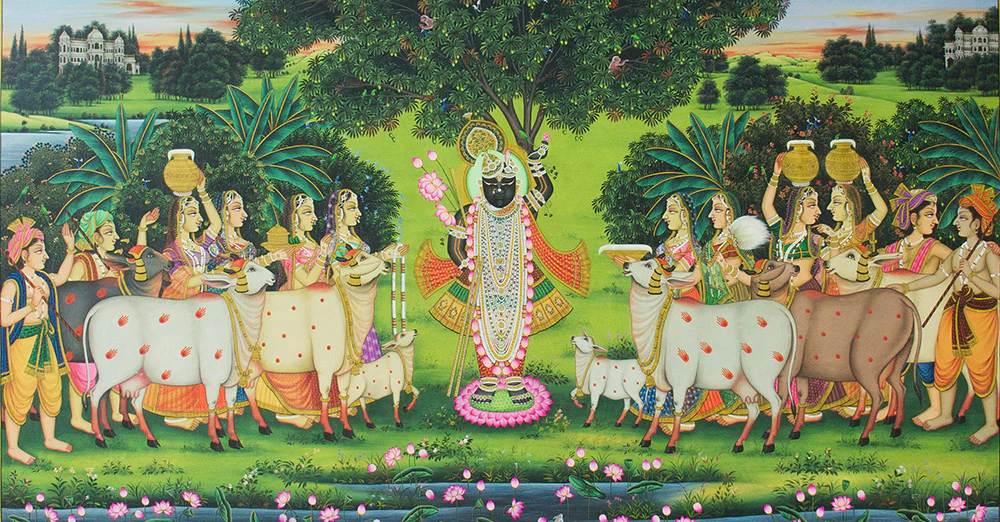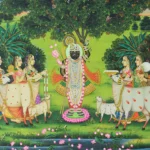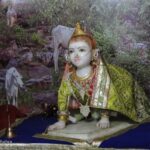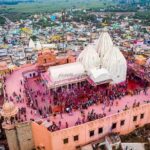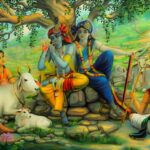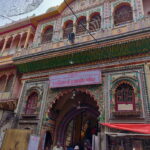After the appearance of Tanya Mahaprabhu in Vrindavan, the establishment stone for the development of numerous sanctuaries was laid by envisioning different types of Master Krishna at many spots in Braj. From one viewpoint, the Mughal Sultanate was being upheld in the development of these sanctuaries, while then again, the travelers who harmed these sanctuaries were likewise hurt. Detecting the risk of intrusion, the Sevayats of numerous Tirthas laid out the vigrahas of their sanctuaries in different states for of getting the organization of the landmark. One such fascinating sanctuary and invigorating story is connected with the icon of Shrinath ji based on the blessed heap of Govardhan. This sanctuary was laid out by Goswami Vallabhacharya in 1519. In 1663, because of dread of any sort of assaults, the icons of the sanctuaries were moved to safe spots in Mathura, Agra and afterward Rajasthan. Today this icon is laid out as ‘Shrinath ji’s sanctuary’ in Shrinathdwara, Rajasthan. This sanctuary is extremely well known among the sanctuaries of Vaishnav organization, in light of the fact that Nathdwara city is renowned from one side of the planet to the other. In this well known sanctuary, the kid type of Shri Krishna is venerated.
The dim marble type of Thakur ji has worn Govardhan Parvat to his left side pinky finger. The vigraha as developed is cut with cow, lion, snake, peacock, parrot and three contemplating magna purushas. The secret of these lakes is as yet a secret.
As indicated by the core value of Pushti, administration to Bal-Santshree Shri Krishna ought to be a definitive objective of man. Music, verse, food and make-up are viewed as significant parts of this help. Fundamentally, in the help of Shrinath ji, an exceptionally lovely juncture of these three is seen. The Ashtyami Seva strategy, which has been happening since the hour of Goswami Vitthalnath ji, is predominant today in whole Braj as well as in Nathdwara.
‘Shrinath Ji Sanctuary’ has been given the type of Shri Krishna’s house. The way of thinking of Shrinath ji in kid structure is extremely alluring. They travel around riding on chariots, likewise go to Dhenu Charan backwoods, dance and furthermore perform Raasleela, this multitude of exercises happen in the sanctuaries through different Leelas of Thakur Ji. For this multitude of administrations, chariots, toshakhana, milkhouse, pangarghar, gem room, bloom room and pens have been underlying the sanctuaries, ponies are additionally kept. In Thakur ji’s washroom, water is shipped off Nath consistently in a urn from the sacred Yamuna of Mathura. The scene of Aarti and Shringaar is the focal point of exceptional fascination among the guests. The drape of the sanctum sanctorum stays open and shut with the goal that the kid Shri Krishna shouldn’t be visible. On the highest point of the tremendous sanctuary, seven banners shudder alongside the Sudarshan Chakra, which address the seven types of Ruler Shrinath.
There is an extremely fascinating tale about the development of Shrinathji sanctuary laid out in Govardhan and afterward going to the Nath sanctuary laid out in this sanctuary. On the sets of Mahaprabhu Vallabhacharya, Seth Purnamal Khatri of Ambala had fabricated a colossal sanctuary on the pinnacle of Govardhan Mountain in Jatipura. In the year 1519, on Vaishakh Shukla Akshaya Tritiya, the icon of Shrinath ji was laid out here. At the point when the Vajra Drishti of the Mughal Sultanate was shown on the sanctuary, in 1566, Girdhar ji, the oldest child of Vitthalnath ji, carried this icon to his home situated in the Satghada sanctuary in Mathura. Thakurji remained here for around two months. After this, Thakurji was sent back to Govardhan however in 1663, seeing the risk of assault on this spot, Shrinath ji took him to Mewar. This excursion required 32 months. In the mean time, Vigraha is likewise remaining in Agra for a long time. The story is that the ground floor of Mewar was named after the chariot of town Thakur ji – which stalled so out in the sanctuary that it couldn’t be taken out. It is the wish of the Ruler that by the finesse of Rath Mewar Lord Raj Singh, wearing the symbol of Shrinath ji in Sihad itself was chosen. This Sihar town itself is well known by the name of Nath.
In 1802, strain between the Marathas and the English was at its pinnacle. Appearance of Maratha people group pioneer Jaswant Rao Holkar Nathdwara fully intent on stealing from the enormous abundance of the sanctuary. The symbol was set out on a restart venture and taken to Ghasiyar, a barren uneven region in the UK. Opened for one year and in the fifth year in Ghasiar, Shrinath ji left for Nathdwara again around 1808 and has been at this spot since that time.
The extraordinary writer Surdas, who was known as the ‘boat of Pushtimarg’, had performed kirtan and singing before this symbol of Shrinath ji in Govardhan for a long time. Today, ‘Srinath Sanctuary’ of Nathdwara is widely popular as the incomparable banner conveyor of Pushti Marg. Because of this old and superb symbol of Shri Krishna, today a ‘smaller than usual Braj’ is noticeable in ‘Nathdwar’ of Rajasthan.
1519 Vaishakh Shukla Akshaya Tritiya, the symbol of Shrinath ji was laid out here. At the point when the Vajra Drishti of Mughalia Sultanate was shown on the sanctuary, in the year 1566, Girdhar ji, the oldest child of Vitthalnath ji, put this symbol in the Satghada sanctuary in Mathura and carried it to his home. Thakurji remained here for around two months.

